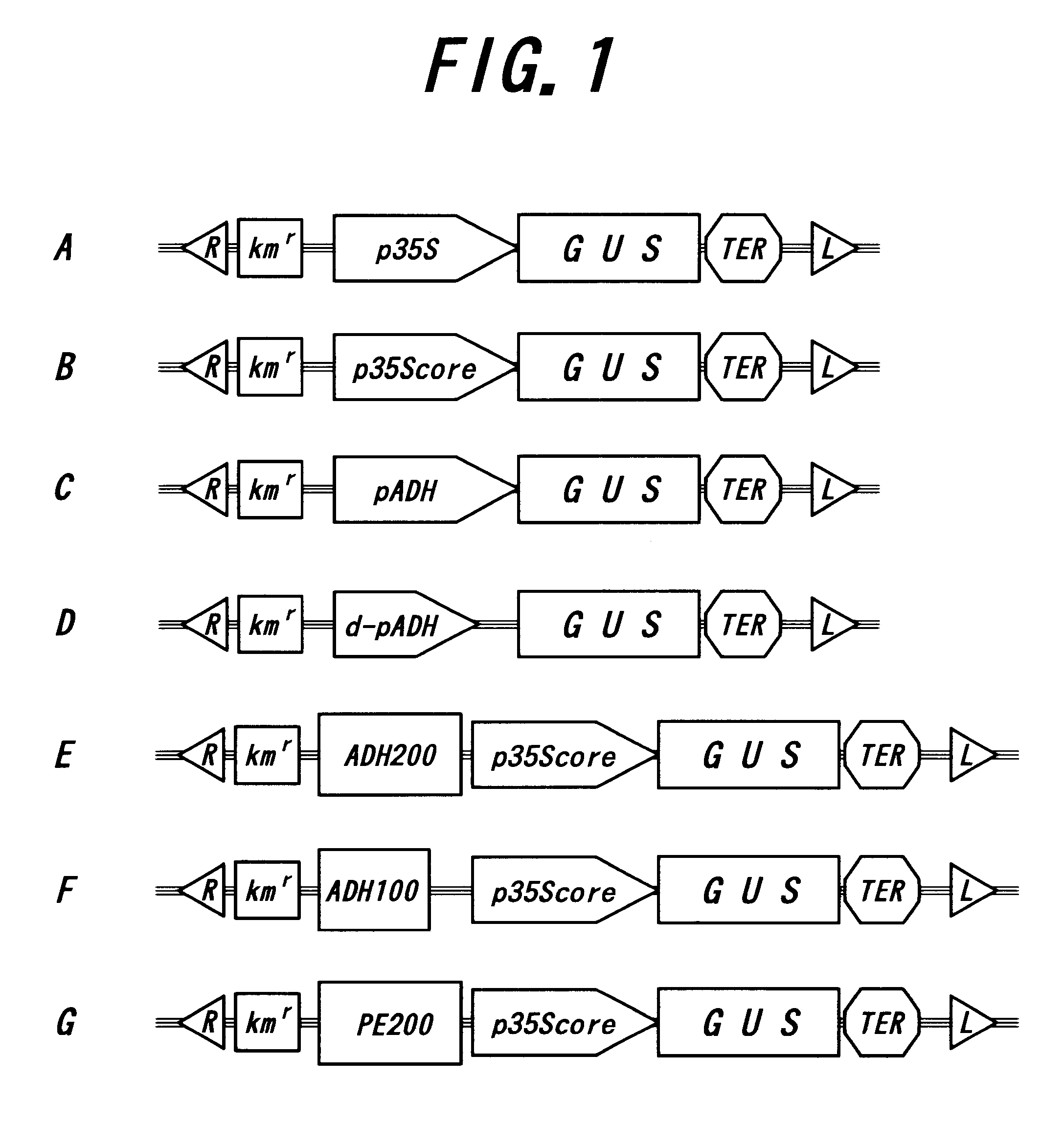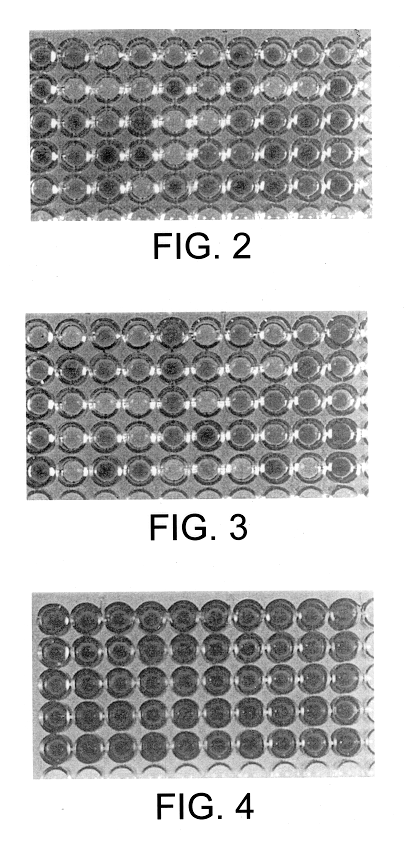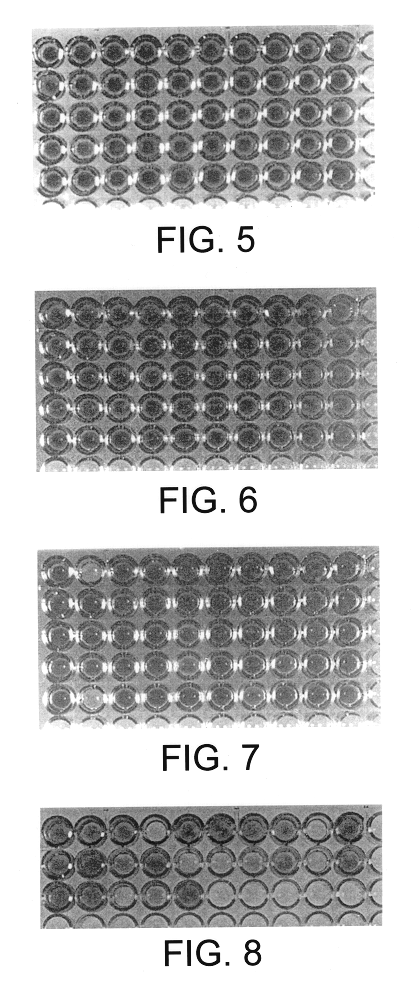DNA fragment for stable expression of an exogenous gene in a plant
a technology of exogenous gene and dna fragment, which is applied in the field of dna fragment for stable expression of exogenous gene in plant, can solve the problems of inability to generalize the technique using mar, the inability to achieve stable expression of introduced gene in many cases, and the diversity of gene expression observed among individual transgenic plants
- Summary
- Abstract
- Description
- Claims
- Application Information
AI Technical Summary
Benefits of technology
Problems solved by technology
Method used
Image
Examples
Embodiment Construction
(Constitution of Plasmid)
Fusion genes used in the experiments of the present invention are shown in FIG. 1.
(A) 35S-GUS: .beta.-Glucronidase gene (GUS) derived from E.coli was ligated to downstream of promoter of cauliflower mosaic virus 35S (CaMV35S) RNA gene.
(B) 35S core-GUS: GUS gene was ligated to downstream of CaMV35S core promoter (core sequence of 90 bp).
(C) pADH-GUS: GUS gene was ligated to tobacco alcohol dehydrogenase (NtADH) promoter.
(D) d-pADH-GUS: GUS gene was ligated to DNA fragment of NtADH promoter corresponding to the region from TATA box to 214 bp upstream of TATA box.
(E) ADH200-core-GUS: ADH200 was conjugated to 5' upstream of CaMV35S core promoter (90 bp)-GUS fusion gene.
(F) ADH100-core-GUS: 110 bp (ADH100) of DNA fragment, corresponding to 5' region of ADH200, was ligated to 5' upstream of CaMV35S core promoter GUS fusion gene.
(G) PE200-core-GUS: About 200 bp (PE200: literature for reference: Shinmyo et al., Biotech, Bioeng., 1998, 58: 329-332) of DNA fragment de...
PUM
| Property | Measurement | Unit |
|---|---|---|
| Stability | aaaaa | aaaaa |
Abstract
Description
Claims
Application Information
 Login to View More
Login to View More - R&D
- Intellectual Property
- Life Sciences
- Materials
- Tech Scout
- Unparalleled Data Quality
- Higher Quality Content
- 60% Fewer Hallucinations
Browse by: Latest US Patents, China's latest patents, Technical Efficacy Thesaurus, Application Domain, Technology Topic, Popular Technical Reports.
© 2025 PatSnap. All rights reserved.Legal|Privacy policy|Modern Slavery Act Transparency Statement|Sitemap|About US| Contact US: help@patsnap.com



